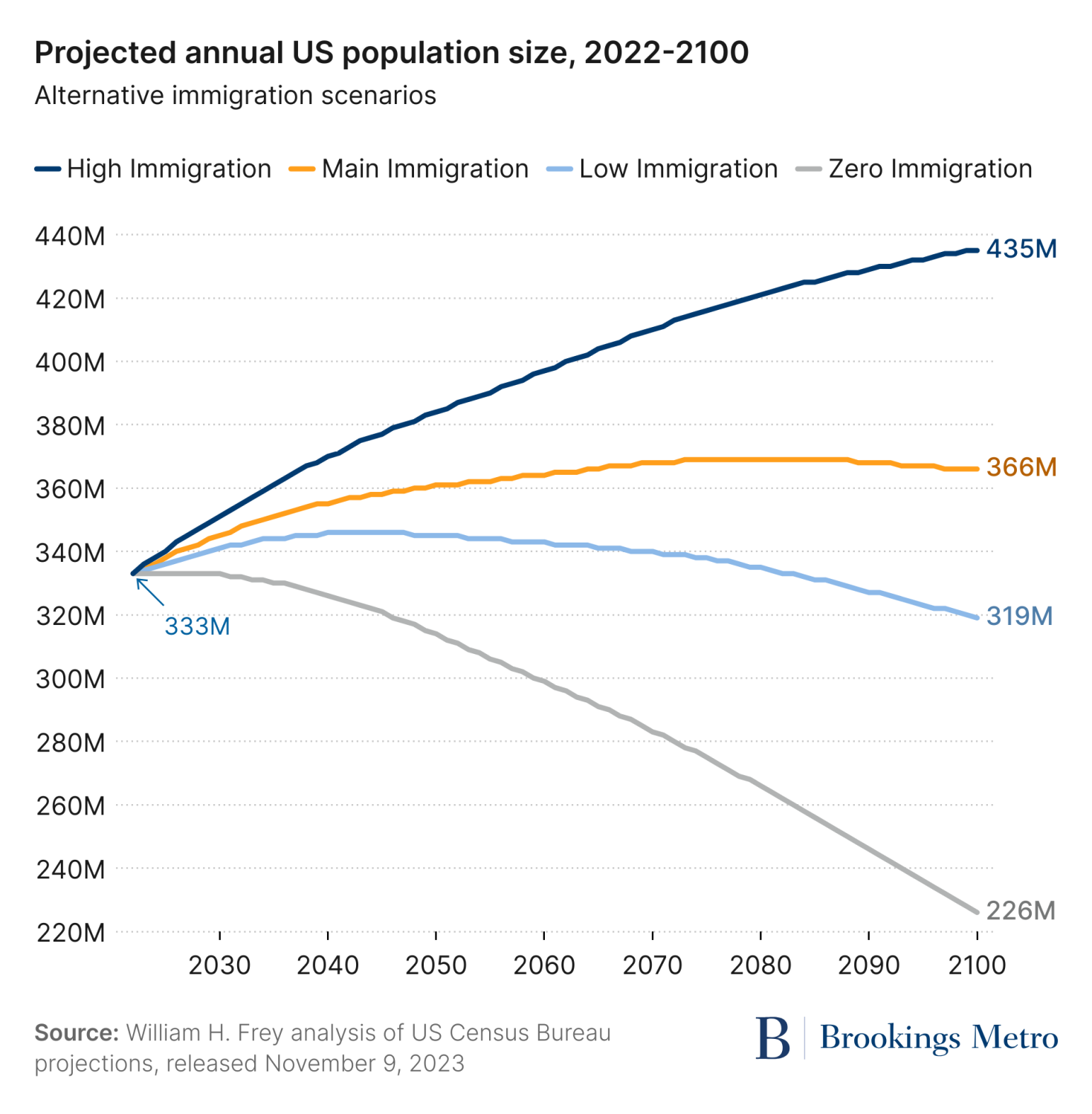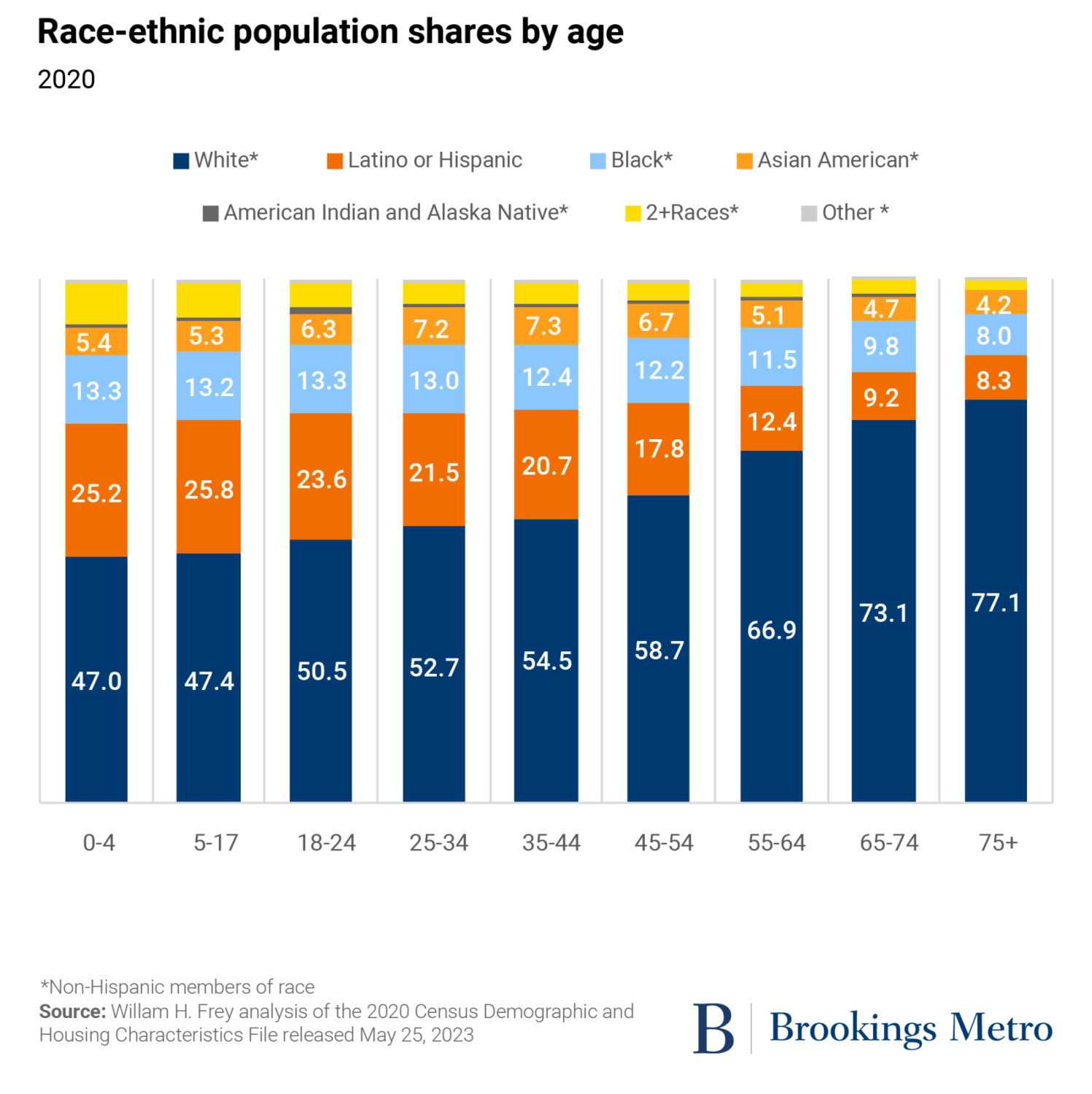As many Americans focus on President-elect Donald Trump’s inauguration, his Day 1 pronouncements, and the policies he plans to introduce, one question is: Will these actions recognize key demographic shifts occuring across the nation, or will they cater mostly to his MAGA base?
In light of President-elect Trump’s sensational campaign rhetoric, his administration is likely to begin implementing policies such as mass deportations and abolishment of diversity initiatives. While such actions might be popular with his still heavily white and older voter bloc, they disregard fundamental shifts in the nation’s demographic structure that both increased immigration and elevated attention to diversity and are crucial for the nation’s future economic vibrancy.
The 2010–20 decade saw the second-lowest population growth in the nation’s history, along with rapid aging. In that decade, the 65-and-older age group grew by nearly two-fifths, while the labor-force-aged population grew less than 5% and the under-18 population actually declined. In a future of decreasing births and increasing deaths across an already aging population, healthy immigration levels are vital for long-term national growth and countering what would otherwise be extreme aging.
U.S. Census Bureau projections based on a range of immigration levels make this clear. If recent decades’ immigration levels held, the U.S. population would start declining after the year 2080. Under a “low” immigration scenario (similar to those in President Trump’s first term), population declines would begin in 20 years. And under a “zero” immigration scenario, the U.S. population would begin declining soon. Only under a scenario with 1.5 million new immigrants per year or higher—a level observed occasionally in the past—would the U.S. population continue to grow for the rest of the century. (See Figure 1.)
Immigration is not just necessary for population growth, but also for making the population younger, as immigrants and their children tend to be younger than native-born Americans. Under the same projections above, “low” or “zero” immigration would lead to zero or negative population growth in the nation’s labor-force-age population by 2035. This is crucial because it is the labor force population that is largely responsible for funding the Social Security and Medicare programs that serve a good part of Trump’s base and are widely supported across the political spectrum. A sharp decline in immigration would put those and other state and local programs at risk.
Of course, immigration is also responsible for population growth or decline in many states and communities. During the unusually high immigration levels reported in the last year, immigration was responsible for all of the population gains in 16 states, and half of the growth in another 22. An analysis by Brookings’ Alan Berube shows that immigrant populations accounted for 31% of 2000-20 growth in big cities and a good part of the growth of smaller metropolitan and nonmetropolitan counties. Thus, policies focusing on the integration of immigrants are necessary in all parts of the country.
Rather than casting immigrants as “un-American,” it is crucial to move the discussion to a serious analysis of the importance of immigration for the nation’s demographic and economic growth, and how broad policies such as comprehensive immigration reform can address future needs both nationally and locally.
Another seismic demographic shift that is relevant to the nation’s future is the rise of its racial and ethnic minority populations. The 2020 census showed declines in the country’s aging white population over the previous decade, such that minorities account for all of the nation’s population growth and now comprise more than 40% of the national total. Yet aging is not race-neutral. As the white population ages out of younger age groups, racial and ethnic minorities—including Latinos or Hispanics, Asian Americans, and persons identifying as two or more races—have been filling the gaps. (see Figure 2.)
The majority share of the nation’s under-18 population are people of color, with Latino or Hispanic and Black populations comprising nearly two-fifths of children nationwide. In all states, the child population is more racially diverse than older populations, and in most, this also applies to the younger working-age population. This is especially the case in Texas—the state that has gained the largest child population, where minorities comprise 70% of children.
But sharp racial disparities in child poverty and other socioeconomic measures continue to impact these populations. They represent the “starting point” of a trajectory of racial and ethnic inequalities that has been evident among young adults in recent generations with respect to educational attainment, homeownership, wealth accumulation, and other measures. They also reflect the current family context of these young people with respect to receiving adequate nutrition, health care, and social services. Important programs that impact young families—such as the Children’s Health Insurance Program, the Supplemental Nutrition Assistance Program, the Child Tax Credit, the Earned Income Tax Credit, Medicaid, Head Start, as well as other housing and education programs that include anti-discrimination policies—could be subject to substantial cuts or elimination if President Trump’s earlier administration is a guide.
The U.S. is at the cusp of significant age and generational change. Its child population, growing at historically low levels, will be feeding into a modestly growing labor force that will need to support the Social Security and Medicare needs of a rapidly growing senior population as well as the nation’s ongoing productivity. And the major engine of this modest growth in young people is a new generation born into families of color—the largest groups of whom stand on the wrong side of rising racial and ethnic inequalities.
This is not the time to make bad choices on federal immigration actions, nor is the time to put the brakes on programs that address racial disparities among America’s youth—the future of our labor force. Let’s hope the President-elect Trump’s inaugural address and early actions pay attention to policies that can address these demographic needs that are critical for the nation’s future prosperity.
The Brookings Institution is committed to quality, independence, and impact.
We are supported by a diverse array of funders. In line with our values and policies, each Brookings publication represents the sole views of its author(s).





Commentary
Will Trump’s inaugural address recognize America’s key demographic shifts?
January 17, 2025